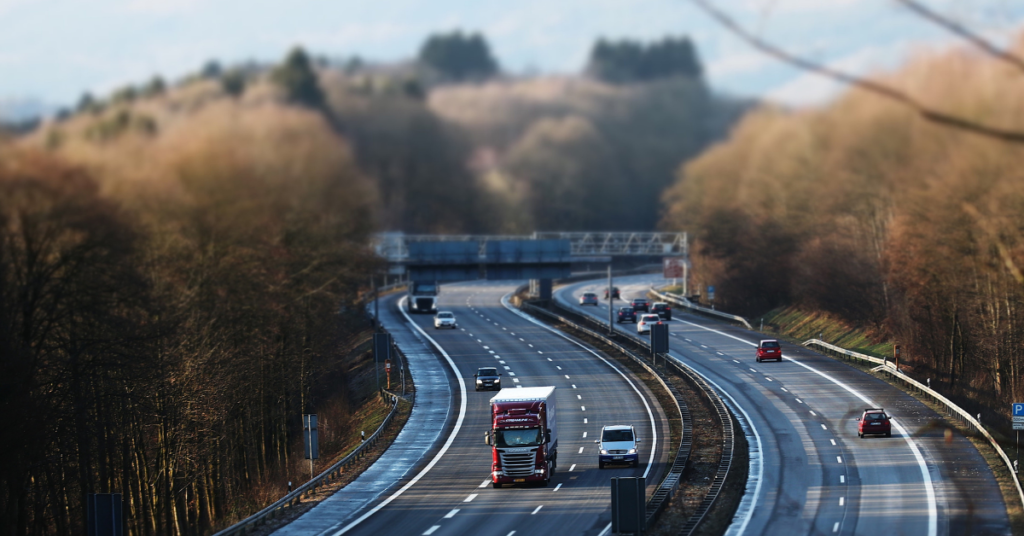Tilt Shift Lens Architecture: Fully Explained
The term Tilt shift lens architecture refers to moving the lens of photographic cameras, which results in a different view, or by manipulating the depth of field, the effect of miniatures is obtained, which is gaining in popularity today.
Through the text, we will explain in more detail all types of Tilt-Shift photography, we’ll tell something more about Tilt-Shift lenses, we will also recommend which one is best for this type of photography, but also with which applications it is possible to get this effect from ordinary images.

Types of Tilt Shift Lens Architecture
Tilt-shift lenses are characterized by two types of movement: tilt, which refers to the rotation of the lens plane about the image plane, and shift, which refers to the parallel movement of the lens about the image plane, which would mean that the tilt movement selects the part of the image that will be sharp, and shift movement regulates the position of the object in the image. Such lenses best achieve the effect of a false miniature (the object looks smaller than it is), but the same can be achieved by using digital photo processing programs.

In addition to obtaining the effect of apparent miniatures, the use of such lenses is very diverse. For example, they are useful when photographing architecture because the convergence of parallel lines can be avoided when photographing tall buildings.
The effect of a false miniature is obtained due to a small depth of field, but such lenses can also be used when you want to achieve a large depth of field (photographing food or landscapes) so that as many objects as possible are in focus.

About Tilt-Shift Objectives
Tilt-shift lenses are made primarily for 36x24mm SLR cameras and medium format cameras and do not have autofocus or zoom. Canon produces them in four focal lengths (17mm, 24mm, 45mm and 90mm), and Nikon in three focal lengths: 24mm, 45mm and 85mm. The first shift lens was produced by Nikon in 1961 for 36x24mm SLR cameras, and the first tilt-shift lens was produced by Canon in 1973.
With such lenses, it is possible to control the plane in the image that will be sharp (Plane of Focus – POF) using two types of movements: rotation of the lens plane about the plane of the image, which is called tilt. Another possibility of movement is a shift, which moves the lens parallel to the image plane. The use of such lenses is diverse, and they are most often used for shooting food, landscapes, portraits, architecture, and by simulating a very small depth of field, the effect of fake miniatures or a diorama effect can be achieved. It comes foremost when applied to motifs shot from a height.
In tilt shift lens architecture, such lenses are very useful because the shift movement avoids the convergence of parallel lines when photographing tall buildings. You can also get an almost three-dimensional photo when shooting a portrait by manipulating the plane of the lens and the plane of the image (for example, the person’s face and one part of the background are in focus), which makes the object or person stand out, but also attracts the attention of the observer.
Tilt-shift lenses are very expensive, so photographers find various ways to simulate their operation. One of the easiest ways is digital processing to obtain a “fake” image with various effects offered by programs (for example, various blur effects in Photoshop), and in recent times, the simulation can also be realized with the help of mobile applications. That would digital processing to make the impression of the miniature as convincing as possible requires an understanding of the operation of the tilt-shift lens.
Let’s also not forget that Lens Filters play an important role in Tilt-Shift photography, and you can find the best ones for small money in our text Best Lens Filters On a Budget.
However, by far the best effect of Tilt-Shift photography is achieved with a lens intended for this very purpose, and as per our recommendation, it definitely stands out Canon TS-E 24mm f/3.5 L.
Canon TS-E 24mm f/3.5 L.
Tilt function
The tilt function enables selective focus, i.e. the lens of the camera can be rotated forwards and backward, so objects that are at an oblique angle can be focused.
Without the tilt function (conventional lenses), depth of field is achieved only in one plane. This means that the image, focus and lens planes are mutually parallel and perpendicular to the axis of the lens, so the objects in focus will be at the same distance from the lens. Objects that are closer or further away from the lens than objects in focus will be blurred.
With the tilt function, i.e. using the lens’s tilt, the focus plane is at an angle about the image plane, which is why objects at different distances from the lens can be focused. Then the area of depth of field consists of the image plane, the lens and the plane’s sharpest focus that intersect along the line, and this principle is known as Sheimpflug’s principle. All objects located within that area will be sharpened.
Careful use of tilt can increase or decrease the number of objects in the image that will be in focus. In addition to achieving a false miniature where the depth of field is very small (the so-called anti-Scheimpflug rotation), this function is often used in landscape photography so that all objects are in focus regardless of their distance from the lens. This is achieved by greater depth of field (the so-called Scheimpflug rotation).
Shift function
The shift function Tilt-Shift lens architecture enables the lens to be moved parallel to the image plane, which means that the position of the object in the image can be changed without moving the body of the camera. All existing lenses capture a circular image, but the sensor in cameras registers the central part and crops the actual image.
With a tilt-shift lens, this circular image is much larger than the surface on which it is cropped, so the position of the object in the image can be changed without moving the body of the camera, so the perspective can be changed and the angle of view can be expanded.
When the image plane is parallel to the object plane, all parallel object lines will remain so. When the plane of the image is not parallel to the plane of the object, then these parallel lines of the object converge, that is, they meet at a point. It can be avoided with the shift function convergence by slightly tilting the camera and moving the lens.
This perspective correction is very useful when shooting tall buildings. Another application of this function is taking extended panoramic photos. It is easy to take multiple photos in the same place by moving the lens without moving the camera. Panoramic photography can easily be done with the tilt-shift lens.
The maximum dimension to which the shift lens can be moved is 11 mm. Even when not in use, these lenses tend to produce a better quality image at the edges due to the larger circular image they capture. There is less blurring and blackening at the edges (vignette) except in cases where the shift is maximum, then the use of the filter is also avoided because its edges can be seen, and that is certainly one of the reasons why our recommendation is the Canon TS-E 24mm f/3.5 L.

Tilt-Shift Image with Canon TS-E 24mm f/3.5 L lens
Creating a miniature scene using Tilt-Shift Lens Architecture
Apparent miniature, also known as the diorama effect, is a process in photography that makes a photograph of an object or location appear as if it were a miniature model. Such an effect is achieved with a small depth of field (which is used in macro photography).
Depth of field is the area of the image where the photographed objects are sharp. When the subject is no longer in that area, whether it is closer to the camera or in the background, it loses focus. Within the area of depth of field is the point of optimal focus where the object will be sharpest. The depth of field is divided into small and large and is determined by the distance of the object and the aperture and focal length of the lens.
The tilt-shift effect simulates a small depth of field so that the photo gradually becomes more blurry starting from the middle towards the top or bottom, which can be achieved optically (tilt-shift lenses) or by digital processing. In the optical simulation, the tilt of the lens is used, which gives the depth of field a wedge shape.
When using conventional lenses, the area of depth of field is defined by two parallel planes on either side of the plane of focus, which is why it is limited in depth, but unlimited in height and width. All objects that are at the same distance from the camera will have the same sharpness.
When using the tilt, the depth of field is limited by two planes that are also on both sides of the focus plane, but they are not parallel, but intersect at a point below the lens (Scheimpflug’s principle), which is why the area of depth of field is wedge-shaped. The tip of that wedge is located near the camera, and its height increases with the object’s distance from the camera.
When the plane of focus is at a certain angle to the image plane, the area of depth of field is small in height but is unlimited in depth and width. In this case, objects that are at the same distance from the lens will not be equally focused (it depends on their position in the image), and while they are at different distances, they will be in focus as long as they are within the area of depth of field. To get the most convincing photo of a fake miniature, it is preferable that the objects were shot from a height.

Creating Tilt-Shift photo architecture with digital processing and mobile applications
With digital photo processing programs, such as Adobe Photoshop, it is very easy to simulate a fake miniature scene with various tools that blur the top and bottom of the image. The result is very similar to that obtained by using a tilt-shift lens.
It is also easy to determine the area and amount of blurring after photography, which is why the use of such programs allows greater flexibility than that obtained with optical simulation.
With the rapid development of technology and the appearance of smartphones, the cameras on mobile phones are becoming better and better over time. Such photos still cannot be compared with those taken by professional cameras, but they serve as worthy replacements for the same. Anyone who wants to try the tilt-shift effect can easily download an app that simulates it. These numerous applications show how popular this effect is.
Conclusion
Tilt shift lens architecture or diorama effect is a popular effect that gives the impression of a miniature scene due to the small depth of field. Small depth of field is common when recording objects that are close to the camera, so the whole frame cannot be clear. With the diorama effect, this depth of field is affected by the tilt function or it can be simulated by photo processing programs and various mobile applications.
Tilt-shift lenses are characterized by two movements: the tilt, which enables the rotational movement of the lens back and forth, and the shift function, which can change the perspective or expand the angle of view.
The tilt lens architecture function allows the photographer selectively focus, so he can record objects that are at an angle about the body of the camera.
In addition to simulating a fake miniature, such lenses have a wide range of applications. They can be used in architecture where the shift function is used to correct the perspective when shooting tall buildings so that their edges are parallel, then they are used when shooting food to make the whole frame sharp, and more recently these lenses are also used for taking interesting portraits. Tilt-shift lenses are very expensive, so photographers find other ways to simulate the effect of fake miniatures.
Programs for digital photo processing simulate this effect by adding a blur to the desired place on the photo. The blur used in newer versions of Adobe Photoshop is different from the one offered in older versions and gives better results, but takes more time to apply. Mobile applications that can simulate this effect are very easy to use and suitable for those who want to try this effect but do not understand it.











